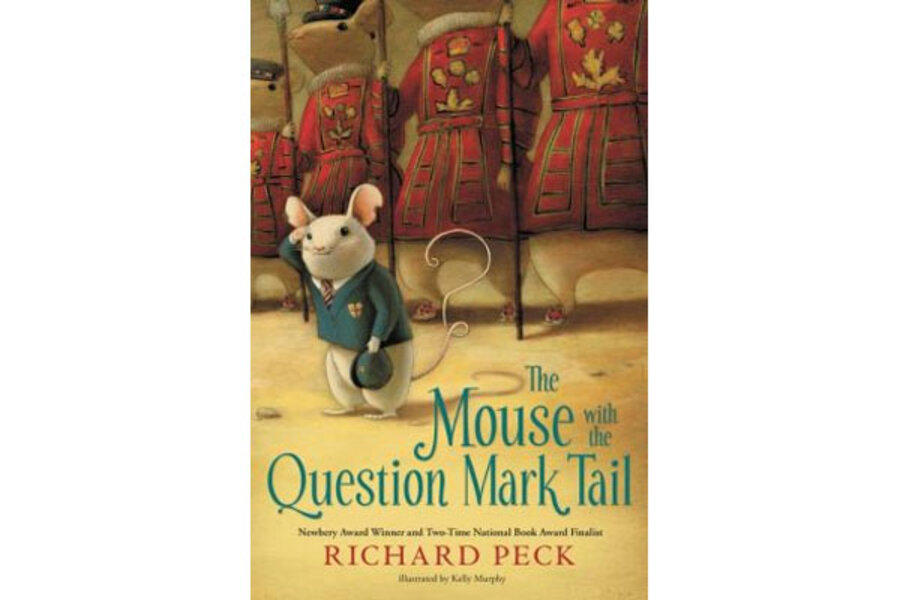The Mouse with the Question Mark Tail
Loading...
"Every time a human walks out of a room, something with more feet walks in."
If there's a better opening line in recent children's literature, I haven't heard it. Then again, this captivating mouse adventure is penned by the great storyteller, Richard Peck, Newbery Medalist. We should expect no less.
The star of The Mouse with the Question Mark Tail, Peck's most recent book, is a tiny mouse with murky origins. In fact, he's part of an entire retinue of mice who have set up housekeeping and shop right next to Buckingham Palace. This littlest mouse living in the Royal Mews – a mouse so insignificant he can't even claim a real name – frequently makes poor choices in both companions and his studies.
So naturally, school offers no relief from his misery. His daily lessons at the Royal Mews Mouse Academy – a grim, "preposterously awful" place – consist largely of math learned with the help of a 12-inch ruler, the memorization of Queen Victoria's entire family tree, and a particularly rousing account of the French Revolution as seen by mice and as told by headmaster B. Chiroptera.
Before too long, Mouse Minor (as he is known in the opening pages of this delightful novel) has broken the cardinal rule of Mousedom: You must not appear fully clothed in the presence of a human. The less humans know about their four-legged counterparts, the better. Of course, Mouse Minor didn't really intend to be seen, but there he was, decked out in his school uniform, on the rough ground of the riding academy. Although he attempts to keep his head down and resemble something the horse dropped, Mouse Minor ends up in big trouble.
Will he drown in the punch bowl? Be seen by a very human Queen Victoria? Trampled by a carriage or – horrors! – disappear into the horse's ear? Youngsters will devour the story, sitting this on the edges of their chairs, waiting anxiously to discover if poor Mouse Minor can extricate himself from numerous quagmires.
But this is not just an animal adventure. In fact, Peck's writing is so rich, so laugh-out-loud funny, that the picture of the mysterious mousedom, complete with proper clothing, food, and life lessons reels us into a truly original, imaginative world. "For every human on earth, there's a mouse with the same job. This is well understood, unless you're a human." By the time you turn the last page, you will understand these enchanting mice quite well.
Peck's books range from historical to realistic fiction and so much in between. Although this latest is billed as a companion to his "Secrets at Sea," they have little to tie them together except the world of the rodent. One does not depend on the other. Go ahead and read this first.
A more-than-perfect book to share aloud with young readers ages nine and up, the book is made even better, if that's possible, by Kelly Murphy's wonderful illustrations. At the head of each chapter sits the back of Mouse Minor, with his distinctive tail. Color illustrations have been tipped in. "The Mouse with the Question Mark Tail" will make a magnificent gift, if you can wrap it before you devour every word. And if you can bear to part with it.
Augusta Scattergood, the author of "Glory Be," regularly reviews children's books for the Monitor.






